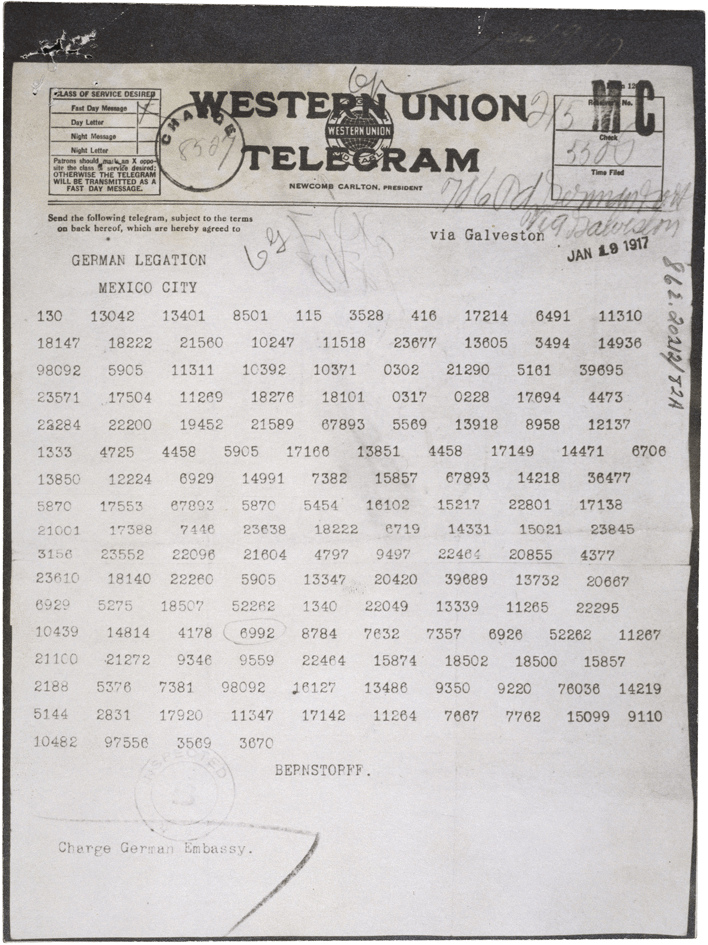|
Geometric Cryptography
Geometric cryptography is an area of cryptology where messages and ciphertexts are represented by geometric quantities such as angles or intervals and where computations are performed by ruler and compass constructions. The difficulty or impossibility of solving certain geometric problems like trisection of an angle using ruler and compass only is the basis for the various protocols in geometric cryptography. This field of study was suggested by Mike Burmester, Ronald L. Rivest and Adi Shamir in 1996. Though the cryptographic methods based on geometry have practically no real life applications, they are of use as pedagogic tools for the elucidation of other more complex cryptographic protocols. A geometric one-way function Some of the geometric cryptographic methods are based on the impossibility of trisecting an angle using ruler and compass. Given an arbitrary angle, there is a straightforward ruler and compass construction for finding the triple of the given angle. But there ... [...More Info...] [...Related Items...] OR: [Wikipedia] [Google] [Baidu] |
Cryptology
Cryptography, or cryptology (from grc, , translit=kryptós "hidden, secret"; and ''graphein'', "to write", or '' -logia'', "study", respectively), is the practice and study of techniques for secure communication in the presence of adversarial behavior. More generally, cryptography is about constructing and analyzing protocols that prevent third parties or the public from reading private messages. Modern cryptography exists at the intersection of the disciplines of mathematics, computer science, information security, electrical engineering, digital signal processing, physics, and others. Core concepts related to information security ( data confidentiality, data integrity, authentication, and non-repudiation) are also central to cryptography. Practical applications of cryptography include electronic commerce, chip-based payment cards, digital currencies, computer passwords, and military communications. Cryptography prior to the modern age was effectively synonymous wit ... [...More Info...] [...Related Items...] OR: [Wikipedia] [Google] [Baidu] |
Message
A message is a discrete unit of communication intended by the source for consumption by some recipient or group of recipients. A message may be delivered by various means, including courier, telegraphy, carrier pigeon and electronic bus. A message can be the content of a broadcast. An interactive exchange of messages forms a conversation. One example of a message is a press release, which may vary from a brief report or statement released by a public agency to commercial publicity material. History Roles in human communication In communication between humans, messages can be verbal or nonverbal: * A verbal message is an exchange of information using words. Examples include face-to-face communication, telephone calls, voicemails, email etc. * A nonverbal message is communicated through actions or behaviors rather than words, such as conscious or unconscious body language. In computer science There are two main senses of the word "message" in computing: messages be ... [...More Info...] [...Related Items...] OR: [Wikipedia] [Google] [Baidu] |
Ciphertext
In cryptography, ciphertext or cyphertext is the result of encryption performed on plaintext using an algorithm, called a cipher. Ciphertext is also known as encrypted or encoded information because it contains a form of the original plaintext that is unreadable by a human or computer without the proper cipher to decrypt it. This process prevents the loss of sensitive information via hacking. Decryption, the inverse of encryption, is the process of turning ciphertext into readable plaintext. Ciphertext is not to be confused with codetext because the latter is a result of a code, not a cipher. Conceptual underpinnings Let m\! be the plaintext message that Alice wants to secretly transmit to Bob and let E_k\! be the encryption cipher, where _k\! is a cryptographic key. Alice must first transform the plaintext into ciphertext, c\!, in order to securely send the message to Bob, as follows: : c = E_k(m). \! In a symmetric-key system, Bob knows Alice's encryption key. Once the m ... [...More Info...] [...Related Items...] OR: [Wikipedia] [Google] [Baidu] |
Angle
In Euclidean geometry, an angle is the figure formed by two Ray (geometry), rays, called the ''Side (plane geometry), sides'' of the angle, sharing a common endpoint, called the ''vertex (geometry), vertex'' of the angle. Angles formed by two rays lie in the plane (geometry), plane that contains the rays. Angles are also formed by the intersection of two planes. These are called dihedral angles. Two intersecting curves may also define an angle, which is the angle of the rays lying tangent to the respective curves at their point of intersection. ''Angle'' is also used to designate the measurement, measure of an angle or of a Rotation (mathematics), rotation. This measure is the ratio of the length of a arc (geometry), circular arc to its radius. In the case of a geometric angle, the arc is centered at the vertex and delimited by the sides. In the case of a rotation, the arc is centered at the center of the rotation and delimited by any other point and its image by the rotation ... [...More Info...] [...Related Items...] OR: [Wikipedia] [Google] [Baidu] |
Computation
Computation is any type of arithmetic or non-arithmetic calculation that follows a well-defined model (e.g., an algorithm). Mechanical or electronic devices (or, historically, people) that perform computations are known as ''computers''. An especially well-known discipline of the study of computation is computer science. Physical process of Computation Computation can be seen as a purely physical process occurring inside a closed physical system called a computer. Examples of such physical systems are digital computers, mechanical computers, quantum computers, DNA computers, molecular computers, microfluidics-based computers, analog computers, and wetware computers. This point of view has been adopted by the physics of computation, a branch of theoretical physics, as well as the field of natural computing. An even more radical point of view, pancomputationalism (inaudible word), is the postulate of digital physics that argues that the evolution of the universe is itself ... [...More Info...] [...Related Items...] OR: [Wikipedia] [Google] [Baidu] |
Ruler And Compass Construction
In geometry, straightedge-and-compass construction – also known as ruler-and-compass construction, Euclidean construction, or classical construction – is the construction of lengths, angles, and other geometric figures using only an idealized ruler and a pair of compasses. The idealized ruler, known as a straightedge, is assumed to be infinite in length, have only one edge, and no markings on it. The compass is assumed to have no maximum or minimum radius, and is assumed to "collapse" when lifted from the page, so may not be directly used to transfer distances. (This is an unimportant restriction since, using a multi-step procedure, a distance can be transferred even with a collapsing compass; see compass equivalence theorem. Note however that whilst a non-collapsing compass held against a straightedge might seem to be equivalent to marking it, the neusis construction is still impermissible and this is what unmarked really means: see Markable rulers below.) More formally, ... [...More Info...] [...Related Items...] OR: [Wikipedia] [Google] [Baidu] |
Ronald L
Ronald is a masculine given name derived from the Old Norse ''Rögnvaldr'', Hanks; Hardcastle; Hodges (2006) p. 234; Hanks; Hodges (2003) § Ronald. or possibly from Old English '' Regenweald''. In some cases ''Ronald'' is an Anglicised form of the Gaelic ''Raghnall'', a name likewise derived from ''Rögnvaldr''. The latter name is composed of the Old Norse elements ''regin'' ("advice", "decision") and ''valdr'' ("ruler"). ''Ronald'' was originally used in England and Scotland, where Scandinavian influences were once substantial, although now the name is common throughout the English-speaking world. A short form of ''Ronald'' is ''Ron''. Pet forms of ''Ronald'' include ''Roni'' and ''Ronnie''. ''Ronalda'' and ''Rhonda'' are feminine forms of ''Ronald''. '' Rhona'', a modern name apparently only dating back to the late nineteenth century, may have originated as a feminine form of ''Ronald''. Hanks; Hardcastle; Hodges (2006) pp. 230, 408; Hanks; Hodges (2003) § Rhona. The names ' ... [...More Info...] [...Related Items...] OR: [Wikipedia] [Google] [Baidu] |
Adi Shamir
Adi Shamir ( he, עדי שמיר; born July 6, 1952) is an Israeli cryptographer. He is a co-inventor of the Rivest–Shamir–Adleman (RSA) algorithm (along with Ron Rivest and Len Adleman), a co-inventor of the Feige–Fiat–Shamir identification scheme (along with Uriel Feige and Amos Fiat), one of the inventors of differential cryptanalysis and has made numerous contributions to the fields of cryptography and computer science. Education Born in Tel Aviv, Shamir received a Bachelor of Science (BSc) degree in mathematics from Tel Aviv University in 1973 and obtained his Master of Science (MSc) and Doctor of Philosophy (PhD) degrees in Computer Science from the Weizmann Institute in 1975 and 1977 respectively. Career and research After a year as a postdoctoral researcher at the University of Warwick, he did research at Massachusetts Institute of Technology (MIT) from 1977 to 1980 before returning to be a member of the faculty of Mathematics and Computer Science at the Weizma ... [...More Info...] [...Related Items...] OR: [Wikipedia] [Google] [Baidu] |
Angle Trisection
Angle trisection is a classical problem of straightedge and compass construction of ancient Greek mathematics. It concerns construction of an angle equal to one third of a given arbitrary angle, using only two tools: an unmarked straightedge and a compass. Pierre Wantzel proved in 1837 that the problem, as stated, is impossible to solve for arbitrary angles. However, although there is no way to trisect an angle ''in general'' with just a compass and a straightedge, some special angles can be trisected. For example, it is relatively straightforward to trisect a right angle (that is, to construct an angle of measure 30 degrees). It is possible to trisect an arbitrary angle by using tools other than straightedge and compass. For example, neusis construction, also known to ancient Greeks, involves simultaneous sliding and rotation of a marked straightedge, which cannot be achieved with the original tools. Other techniques were developed by mathematicians over the centuries. Becaus ... [...More Info...] [...Related Items...] OR: [Wikipedia] [Google] [Baidu] |
One-way Function
In computer science, a one-way function is a function that is easy to compute on every input, but hard to invert given the image of a random input. Here, "easy" and "hard" are to be understood in the sense of computational complexity theory, specifically the theory of polynomial time problems. Not being one-to-one is not considered sufficient for a function to be called one-way (see Theoretical definition, below). The existence of such one-way functions is still an open conjecture. Their existence would prove that the complexity classes P and NP are not equal, thus resolving the foremost unsolved question of theoretical computer science.Oded Goldreich (2001). Foundations of Cryptography: Volume 1, Basic Tools,draft availablefrom author's site). Cambridge University Press. . (see als The converse is not known to be true, i.e. the existence of a proof that P≠NP would not directly imply the existence of one-way functions. In applied contexts, the terms "easy" and "hard" are usu ... [...More Info...] [...Related Items...] OR: [Wikipedia] [Google] [Baidu] |
Zero-knowledge Proof
In cryptography, a zero-knowledge proof or zero-knowledge protocol is a method by which one party (the prover) can prove to another party (the verifier) that a given statement is true while the prover avoids conveying any additional information apart from the fact that the statement is indeed true. The essence of zero-knowledge proofs is that it is trivial to prove that one possesses knowledge of certain information by simply revealing it; the challenge is to prove such possession without revealing the information itself or any additional information. If proving a statement requires that the prover possess some secret information, then the verifier will not be able to prove the statement to anyone else without possessing the secret information. The statement being proved must include the assertion that the prover has such knowledge, but without including or transmitting the knowledge itself in the assertion. Otherwise, the statement would not be proved in zero-knowledge because it ... [...More Info...] [...Related Items...] OR: [Wikipedia] [Google] [Baidu] |




